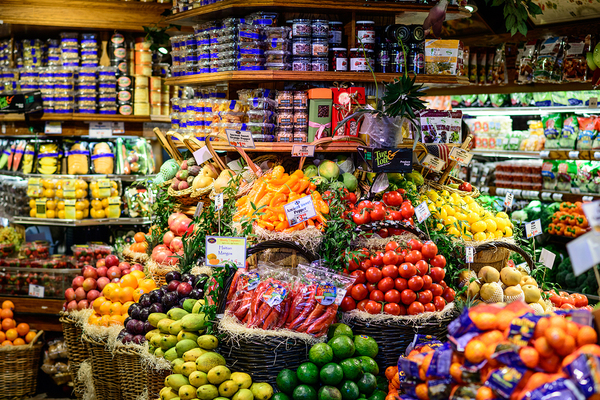Premium foods are not really niche products, according to research by SmartBrief. This is actually terrific news for makers of premium food products, because it broadens the scope for effective marketing.
That is because people buy premium products largely based on the symbolic and sensory attributes the products possess. In other words, shoppers tend to buy based on emotion, and then justify their purchase to themselves using facts. The emotions are often occasion-specific rather than reflective of an overall “premium product” lifestyle.

Often it is occasion-specific factors rather than overall lifestyle driving purchases of premium food products.
Consumers Want to Know How Premium Products Are Made
Marketing of premium food products, therefore, should be based on product first, and consumer lifestyle second. Research bears this out by indicating that the narrative of how a product is made is the factor most likely to cause consumers to try out a premium brand rather than another. Whether or not consumers regularly buy premium products, or only buy them on occasion, they want to know what the products’ value-added attributes are compared to those offered by ordinary “legacy” brands.
Retail Buyers Are Consumers Too!
Marketing premium brands to focus on the product narrative that highlights its unique attributes works whether the brand is targeting ordinary consumers in the store, or retail buyers. After all, retain buyers are consumers too. How does the premium product add value to the category mix on the store shelf? Answer this question, and you are likely to satisfy both the end consumer and the retail buyer. Generally, this answer involves a great deal of transparency about how and why the product is made, and what the values are of the manufacturer of the product.
The “Bold, Consumer-Facing Billboard on the Shelf”
As for premium food packaging design, it is effectively a “bold, consumer-facing billboard on the shelf.” Shoppers make their decisions in a matter of seconds, so shelf appeal is indispensable, and it must include both excellent design and outstanding functionality. While food packaging designs must catch the consumer’s eye first, the addition of functionality to that design (in the form of, say, being re-sealable, compact, or lightweight) is often the thing that convinces the consumer that the product adds value and is the best choice.
The Key Premium Packaging Elements
Food packaging designs must contain and protect the product within and they must also attract attention. What makes a food packaging design “premium” is partly about visual appeal, and partly about functionality and convenience. Shoppers expect packaging designs to be adapted to their needs and wants, and when the designs do this, the brand conveys that not only is the product great, it also does something to make the consumer’s life easier or better. For example, the premium snack food in a resealable pouch reassures the shopper that the product will remain fresh even if it is consumed over multiple snacktimes.

Even inexpensive products like chewing gum can benefit from premium packaging design elements.
Make Sure Your Premium Food Packaging Addresses These Four Desires
Food packaging design cannot fall down in any design category if it is to succeed against the competition. In fact, great food packaging design can be more effective than paid advertising or even celebrity endorsement. The following four cues should be addressed with premium packaging, according to product innovation experts at Nielsen:
- A distinctive shape that immediately conveys the iconic status of a premium product (like the triangular tubes containing Toblerone bars).
- Appeal to as many senses as possible.
- Packaging finishes that impart good tactile feel.
- Simplicity and elegance – a “less is more” aesthetic.
Are Consumers Willing to Pay More?
Premium food packaging design costs more for brands, but are consumers willing to pay more? Yes, they are. However, that is true only so long as the product itself is worthy of a premium price. In other words, dressing up an ordinary product in premium packaging will not convince consumers to pay more. Today’s consumer, in particular the Millennial consumer, is ready to pay more for products that have the desired attributes, including convenience and outstanding packaging design. When consumers can clearly see a premium product encased in a premium food packaging design, they are more than happy to make the purchase.
PKG Branding Design brings together the expertise of CPG branding and design, identifying the needs of our customers and helping to educate them on the most recent trends.
 |
 |


.jpg)




